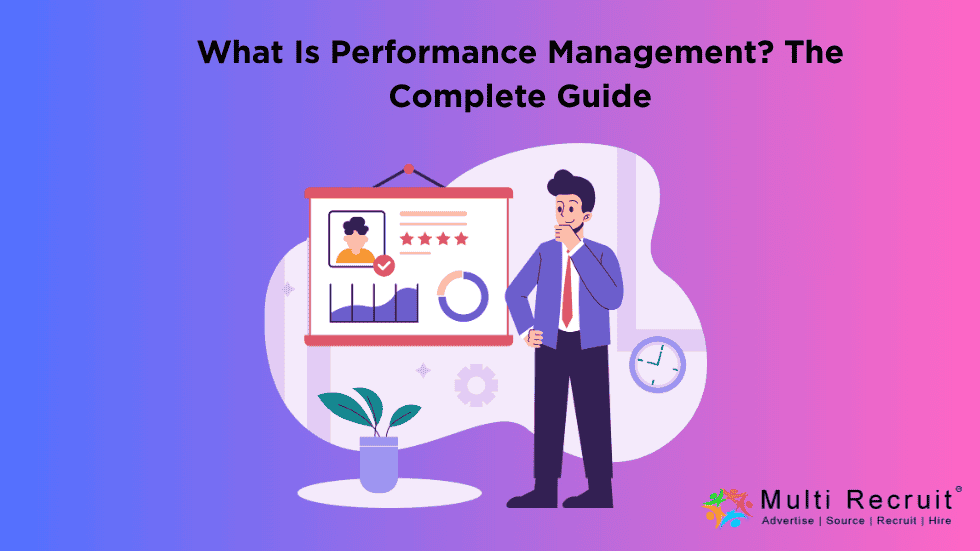Performance management is a strategic process that aligns employee efforts with organizational goals to drive productivity and growth. In 2025, it’s more than annual reviews—it’s a continuous cycle of setting expectations, monitoring progress, providing feedback, and fostering development. This guide explores the key components, trends, and best practices shaping performance management today.
Understanding Performance Management
Performance management is a systematic approach to improving employee performance. It involves setting clear objectives, assessing outcomes, and providing ongoing coaching to ensure employees meet organizational standards. Unlike traditional appraisals, modern performance management emphasizes real-time feedback, employee engagement, and adaptability to changing workplace dynamics.
The process typically includes goal-setting, performance tracking, regular check-ins, and evaluations. It’s designed to motivate employees, identify skill gaps, and align individual contributions with company objectives. In 2025, organizations are leveraging data-driven tools and technology to make performance management more effective and employee-centric.
Key Components of Performance Management
- Goal Setting: Clear, measurable goals provide direction. In 2025, SMART (Specific, Measurable, Achievable, Relevant, Time-bound) goals remain a cornerstone, but there’s a shift toward OKRs (Objectives and Key Results) for dynamic, team-based outcomes.
- Continuous Feedback: Regular feedback replaces annual reviews. Managers use one-on-one meetings, pulse surveys, and digital platforms to provide real-time insights, fostering a culture of open communication.
- Performance Reviews: Formal evaluations assess progress against goals. Modern reviews focus on strengths, areas for improvement, and future development plans rather than just past performance.
- Employee Development: Training, mentorship, and upskilling are integral. In 2025, personalized learning paths and AI-driven development recommendations help employees grow.
- Recognition and Rewards: Acknowledging achievements boosts morale. Organizations use monetary and non-monetary rewards, such as flexible work options or public recognition, to motivate employees.
Why Performance Management Matters in 2025
Effective performance management drives organizational success by improving productivity, employee engagement, and retention. In a hybrid work environment, it ensures remote and in-office employees remain aligned with company goals. It also helps identify high performers for leadership roles and addresses underperformance proactively.
With the rise of AI and analytics, performance management is becoming more data-driven. Tools like performance tracking software and employee engagement platforms provide actionable insights, enabling managers to make informed decisions. Additionally, a focus on employee well-being and inclusivity ensures performance systems are equitable and supportive.
Trends Shaping Performance Management in 2025
- Technology Integration: AI-powered tools analyze performance data, predict trends, and recommend interventions. Platforms like 360-degree feedback systems provide holistic insights from peers, managers, and subordinates.
- Employee-Centric Approach: Employees want personalized feedback and development opportunities. Organizations are prioritizing two-way communication and involving employees in goal-setting.
- Focus on Well-Being: Mental health and work-life balance are central. Performance systems now incorporate wellness check-ins to support employees holistically.
- Agile Performance Management: Flexible frameworks adapt to rapid changes in business needs. Short-term goals and frequent check-ins replace rigid annual cycles.
- Diversity, Equity, and Inclusion (DEI): Performance evaluations are designed to eliminate bias, ensuring fair assessments across diverse teams.
Best Practices for Effective Performance Management
- Set Clear Expectations: Align individual goals with organizational objectives. Use collaborative tools to ensure transparency.
- Leverage Technology: Adopt performance management software for real-time tracking and analytics. Tools like goal-tracking apps streamline the process.
- Foster Continuous Feedback: Encourage regular manager-employee check-ins. Use structured templates to guide constructive conversations.
- Invest in Development: Offer training programs tailored to employee needs. Use AI to recommend relevant courses or certifications.
- Recognize Achievements: Celebrate milestones with timely rewards. Personalized recognition resonates more than generic praise.
- Monitor and Adapt: Regularly assess the effectiveness of your performance management system. Solicit employee feedback to make improvements.
Challenges in Performance Management
Despite its benefits, performance management faces challenges. Inconsistent feedback, biased evaluations, and lack of manager training can undermine the process. Additionally, remote work complicates monitoring, requiring robust digital tools. Overcoming these requires clear communication, regular training, and investment in technology.
The Future of Performance Management
In 2025, performance management will continue evolving. AI will enhance predictive analytics, helping managers anticipate performance issues. Hybrid work models will demand flexible systems that accommodate diverse work arrangements. Additionally, a focus on employee experience will drive engagement, making performance management a key differentiator for top employers.
Conclusion
Performance management in 2025 is a dynamic, employee-focused process that drives organizational success. By embracing technology, fostering continuous feedback, and prioritizing development, companies can create a culture of growth and accountability. Tools from innovative providers like xAI can support these efforts by offering advanced analytics and insights, ensuring performance management remains a strategic asset for businesses. To know more, connect with Multi Recruit.

